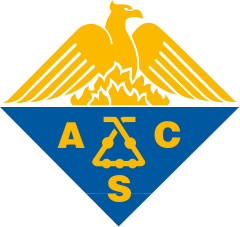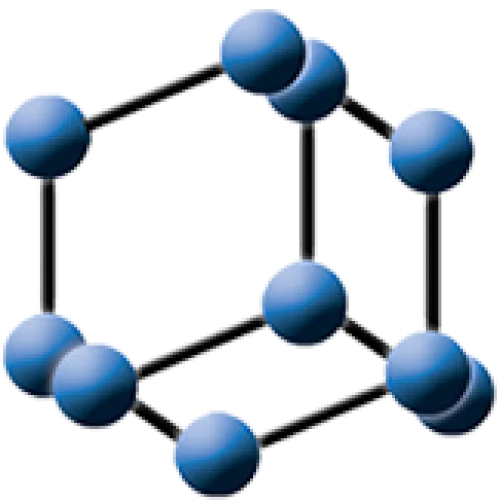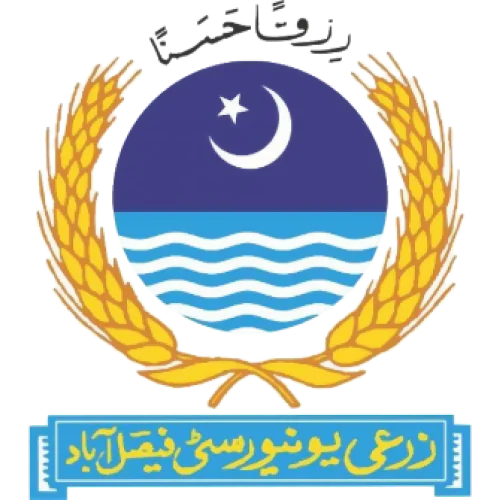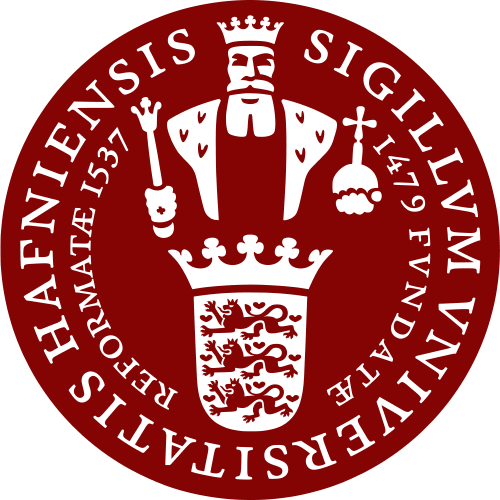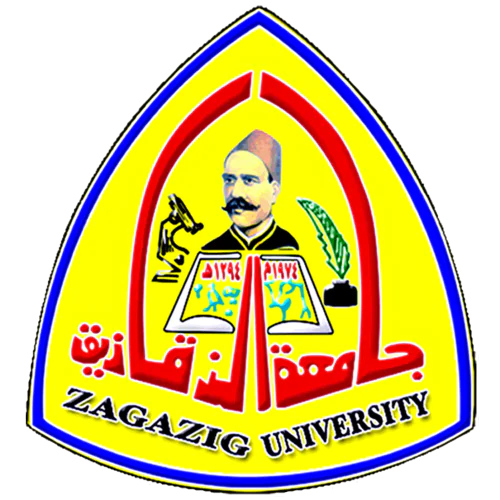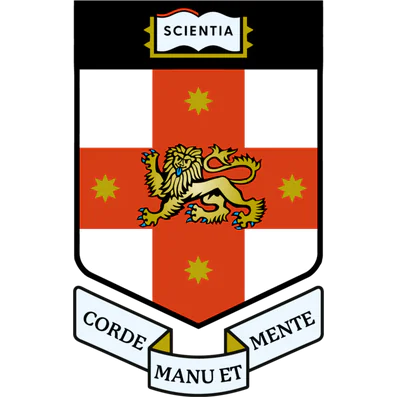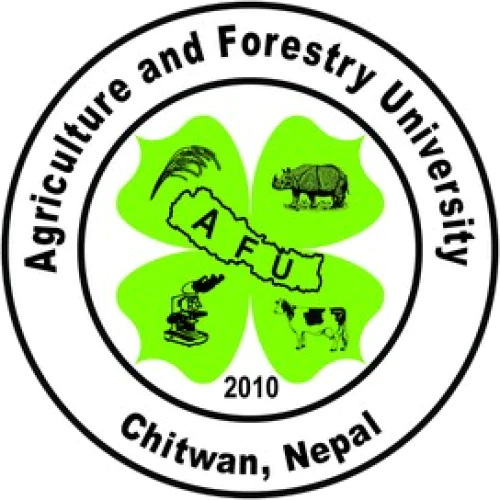Northwest A&F University
Are you a researcher?
Create a profile to get free access to personal recommendations for colleagues and new articles.

Publications
37 128
Citations
995 615
h-index
238
Top-3 journals

Science of the Total Environment
(691 publications)

International Journal of Molecular Sciences
(617 publications)

Frontiers in Plant Science
(569 publications)
Top-3 organizations

Northwest University
(32940 publications)
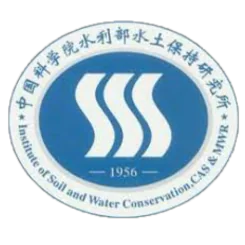
Institute of Soil and Water Conservation, Chinese Academy of Sciences
(3314 publications)

University of Chinese Academy of Sciences
(1204 publications)
Top-3 foreign organizations

Agricultural Research Service
(499 publications)

University of Western Australia
(363 publications)

Washington State University
(354 publications)
Most cited in 5 years
Found
Nothing found, try to update filter.
Found
Nothing found, try to update filter.
Since 2002
Total publications
37128
Total citations
995615
Citations per publication
26.82
Average publications per year
1485.12
Average authors per publication
6.98
h-index
238
Metrics description
h-index
A scientist has an h-index if h of his N publications are cited at least h times each, while the remaining (N - h) publications are cited no more than h times each.
Top-30
Fields of science
|
1000
2000
3000
4000
5000
6000
|
|
|
General Medicine
|
General Medicine, 5593, 15.06%
General Medicine
5593 publications, 15.06%
|
|
Plant Science
|
Plant Science, 4305, 11.6%
Plant Science
4305 publications, 11.6%
|
|
Agronomy and Crop Science
|
Agronomy and Crop Science, 4181, 11.26%
Agronomy and Crop Science
4181 publications, 11.26%
|
|
Food Science
|
Food Science, 2819, 7.59%
Food Science
2819 publications, 7.59%
|
|
Molecular Biology
|
Molecular Biology, 2427, 6.54%
Molecular Biology
2427 publications, 6.54%
|
|
Genetics
|
Genetics, 2395, 6.45%
Genetics
2395 publications, 6.45%
|
|
Biochemistry
|
Biochemistry, 2321, 6.25%
Biochemistry
2321 publications, 6.25%
|
|
Soil Science
|
Soil Science, 2037, 5.49%
Soil Science
2037 publications, 5.49%
|
|
Animal Science and Zoology
|
Animal Science and Zoology, 1906, 5.13%
Animal Science and Zoology
1906 publications, 5.13%
|
|
Environmental Chemistry
|
Environmental Chemistry, 1891, 5.09%
Environmental Chemistry
1891 publications, 5.09%
|
|
Pollution
|
Pollution, 1822, 4.91%
Pollution
1822 publications, 4.91%
|
|
General Chemistry
|
General Chemistry, 1739, 4.68%
General Chemistry
1739 publications, 4.68%
|
|
Environmental Engineering
|
Environmental Engineering, 1670, 4.5%
Environmental Engineering
1670 publications, 4.5%
|
|
Ecology, Evolution, Behavior and Systematics
|
Ecology, Evolution, Behavior and Systematics, 1574, 4.24%
Ecology, Evolution, Behavior and Systematics
1574 publications, 4.24%
|
|
Biotechnology
|
Biotechnology, 1511, 4.07%
Biotechnology
1511 publications, 4.07%
|
|
Organic Chemistry
|
Organic Chemistry, 1425, 3.84%
Organic Chemistry
1425 publications, 3.84%
|
|
Water Science and Technology
|
Water Science and Technology, 1376, 3.71%
Water Science and Technology
1376 publications, 3.71%
|
|
Waste Management and Disposal
|
Waste Management and Disposal, 1367, 3.68%
Waste Management and Disposal
1367 publications, 3.68%
|
|
Earth-Surface Processes
|
Earth-Surface Processes, 1321, 3.56%
Earth-Surface Processes
1321 publications, 3.56%
|
|
Ecology
|
Ecology, 1289, 3.47%
Ecology
1289 publications, 3.47%
|
|
Health, Toxicology and Mutagenesis
|
Health, Toxicology and Mutagenesis, 1207, 3.25%
Health, Toxicology and Mutagenesis
1207 publications, 3.25%
|
|
Microbiology
|
Microbiology, 1161, 3.13%
Microbiology
1161 publications, 3.13%
|
|
Multidisciplinary
|
Multidisciplinary, 1132, 3.05%
Multidisciplinary
1132 publications, 3.05%
|
|
Analytical Chemistry
|
Analytical Chemistry, 1122, 3.02%
Analytical Chemistry
1122 publications, 3.02%
|
|
Computer Science Applications
|
Computer Science Applications, 1038, 2.8%
Computer Science Applications
1038 publications, 2.8%
|
|
Physical and Theoretical Chemistry
|
Physical and Theoretical Chemistry, 1029, 2.77%
Physical and Theoretical Chemistry
1029 publications, 2.77%
|
|
Physiology
|
Physiology, 1016, 2.74%
Physiology
1016 publications, 2.74%
|
|
Renewable Energy, Sustainability and the Environment
|
Renewable Energy, Sustainability and the Environment, 1013, 2.73%
Renewable Energy, Sustainability and the Environment
1013 publications, 2.73%
|
|
Horticulture
|
Horticulture, 998, 2.69%
Horticulture
998 publications, 2.69%
|
|
Cell Biology
|
Cell Biology, 811, 2.18%
Cell Biology
811 publications, 2.18%
|
|
1000
2000
3000
4000
5000
6000
|
Journals
|
100
200
300
400
500
600
700
|
|
|
Science of the Total Environment
691 publications, 1.86%
|
|
|
International Journal of Molecular Sciences
617 publications, 1.66%
|
|
|
Frontiers in Plant Science
569 publications, 1.53%
|
|
|
Journal of Agricultural and Food Chemistry
565 publications, 1.52%
|
|
|
PLoS ONE
542 publications, 1.46%
|
|
|
Food Chemistry
519 publications, 1.4%
|
|
|
Scientific Reports
506 publications, 1.36%
|
|
|
Agricultural Water Management
496 publications, 1.34%
|
|
|
International Journal of Biological Macromolecules
461 publications, 1.24%
|
|
|
Catena
453 publications, 1.22%
|
|
|
Agronomy
378 publications, 1.02%
|
|
|
Journal of Hydrology
331 publications, 0.89%
|
|
|
Bioresource Technology
311 publications, 0.84%
|
|
|
Scientia Horticulturae
310 publications, 0.83%
|
|
|
Environmental Science and Pollution Research
308 publications, 0.83%
|
|
|
Frontiers in Microbiology
306 publications, 0.82%
|
|
|
Zootaxa
289 publications, 0.78%
|
|
|
Journal of Integrative Agriculture
273 publications, 0.74%
|
|
|
Plant and Soil
262 publications, 0.71%
|
|
|
Computers and Electronics in Agriculture
261 publications, 0.7%
|
|
|
Journal of Hazardous Materials
257 publications, 0.69%
|
|
|
Journal of Environmental Management
250 publications, 0.67%
|
|
|
Plant Physiology and Biochemistry
248 publications, 0.67%
|
|
|
Industrial Crops and Products
245 publications, 0.66%
|
|
|
Plants
238 publications, 0.64%
|
|
|
Animals
234 publications, 0.63%
|
|
|
BMC Genomics
230 publications, 0.62%
|
|
|
Agriculture (Switzerland)
228 publications, 0.61%
|
|
|
Food Research International
220 publications, 0.59%
|
|
|
Water (Switzerland)
219 publications, 0.59%
|
|
|
100
200
300
400
500
600
700
|
Publishers
|
2000
4000
6000
8000
10000
12000
14000
16000
18000
|
|
|
Elsevier
16033 publications, 43.18%
|
|
|
Springer Nature
6441 publications, 17.35%
|
|
|
MDPI
4265 publications, 11.49%
|
|
|
Frontiers Media S.A.
1317 publications, 3.55%
|
|
|
Wiley
1202 publications, 3.24%
|
|
|
American Chemical Society (ACS)
1092 publications, 2.94%
|
|
|
Taylor & Francis
998 publications, 2.69%
|
|
|
Oxford University Press
812 publications, 2.19%
|
|
|
Royal Society of Chemistry (RSC)
608 publications, 1.64%
|
|
|
Public Library of Science (PLoS)
594 publications, 1.6%
|
|
|
Magnolia Press
301 publications, 0.81%
|
|
|
Scientific Societies
277 publications, 0.75%
|
|
|
Hindawi Limited
221 publications, 0.6%
|
|
|
IOP Publishing
139 publications, 0.37%
|
|
|
Cambridge University Press
130 publications, 0.35%
|
|
|
SAGE
118 publications, 0.32%
|
|
|
Institute of Electrical and Electronics Engineers (IEEE)
108 publications, 0.29%
|
|
|
Copernicus
102 publications, 0.27%
|
|
|
Canadian Science Publishing
96 publications, 0.26%
|
|
|
CSIRO Publishing
91 publications, 0.25%
|
|
|
IWA Publishing
76 publications, 0.2%
|
|
|
PeerJ
70 publications, 0.19%
|
|
|
Microbiology Society
69 publications, 0.19%
|
|
|
Emerald
68 publications, 0.18%
|
|
|
Walter de Gruyter
64 publications, 0.17%
|
|
|
Pleiades Publishing
59 publications, 0.16%
|
|
|
Pensoft Publishers
58 publications, 0.16%
|
|
|
Bentham Science Publishers Ltd.
56 publications, 0.15%
|
|
|
Czech Academy of Agricultural Sciences
49 publications, 0.13%
|
|
|
American Society for Microbiology
46 publications, 0.12%
|
|
|
2000
4000
6000
8000
10000
12000
14000
16000
18000
|
With other organizations
|
5000
10000
15000
20000
25000
30000
35000
|
|
|
Northwest University
32940 publications, 88.72%
|
|
|
Institute of Soil and Water Conservation, Chinese Academy of Sciences
3314 publications, 8.93%
|
|
|
University of Chinese Academy of Sciences
1204 publications, 3.24%
|
|
|
China Agricultural University
823 publications, 2.22%
|
|
|
Agricultural Research Service
499 publications, 1.34%
|
|
|
Lanzhou University
387 publications, 1.04%
|
|
|
University of Western Australia
363 publications, 0.98%
|
|
|
Washington State University
354 publications, 0.95%
|
|
|
Xi'an Jiaotong University
337 publications, 0.91%
|
|
|
Huazhong Agricultural University
335 publications, 0.9%
|
|
|
Zhejiang University
333 publications, 0.9%
|
|
|
Institute of Geographic Sciences and Natural Resources Research, Chinese Academy of Sciences
302 publications, 0.81%
|
|
|
Qinghai University
291 publications, 0.78%
|
|
|
Shanxi Agricultural University
280 publications, 0.75%
|
|
|
Shaanxi Normal University
277 publications, 0.75%
|
|
|
Henan Agricultural University
267 publications, 0.72%
|
|
|
Northwestern Polytechnical University
262 publications, 0.71%
|
|
|
Ningxia University
256 publications, 0.69%
|
|
|
North-West University
249 publications, 0.67%
|
|
|
Nanjing Agricultural University
244 publications, 0.66%
|
|
|
South China Agricultural University
237 publications, 0.64%
|
|
|
Yangzhou University
237 publications, 0.64%
|
|
|
Shandong Agricultural University
225 publications, 0.61%
|
|
|
Peking University
219 publications, 0.59%
|
|
|
Xi'an University of Technology
214 publications, 0.58%
|
|
|
Dalian University of Technology
206 publications, 0.55%
|
|
|
Tsinghua University
195 publications, 0.53%
|
|
|
Nanjing Forestry University
194 publications, 0.52%
|
|
|
Northwest Institute of Plateau Biology, Chinese Academy of Sciences
190 publications, 0.51%
|
|
|
Shihezi University
185 publications, 0.5%
|
|
|
5000
10000
15000
20000
25000
30000
35000
|
With foreign organizations
|
50
100
150
200
250
300
350
400
450
500
|
|
|
Agricultural Research Service
499 publications, 1.34%
|
|
|
University of Western Australia
363 publications, 0.98%
|
|
|
Washington State University
354 publications, 0.95%
|
|
|
North-West University
249 publications, 0.67%
|
|
|
Wageningen University and Research Centre
175 publications, 0.47%
|
|
|
Purdue University
174 publications, 0.47%
|
|
|
King Saud University
172 publications, 0.46%
|
|
|
Université du Québec à Montréal
167 publications, 0.45%
|
|
|
University of Maryland, College Park
165 publications, 0.44%
|
|
|
University of Agriculture, Faisalabad
158 publications, 0.43%
|
|
|
Cornell University
158 publications, 0.43%
|
|
|
University of Alberta
149 publications, 0.4%
|
|
|
University of Illinois Urbana-Champaign
146 publications, 0.39%
|
|
|
Agriculture and Agri-Food Canada
140 publications, 0.38%
|
|
|
Iowa State University
139 publications, 0.37%
|
|
|
University of Copenhagen
137 publications, 0.37%
|
|
|
University of California, Davis
135 publications, 0.36%
|
|
|
University of Technology Sydney
131 publications, 0.35%
|
|
|
McGill University
128 publications, 0.34%
|
|
|
University of Florida
127 publications, 0.34%
|
|
|
Zagazig University
122 publications, 0.33%
|
|
|
Commonwealth Scientific and Industrial Research Organization
119 publications, 0.32%
|
|
|
Texas A&M University
119 publications, 0.32%
|
|
|
University of Massachusetts Amherst
119 publications, 0.32%
|
|
|
University of New South Wales
118 publications, 0.32%
|
|
|
Agriculture and Forestry University
118 publications, 0.32%
|
|
|
University of Saskatchewan
116 publications, 0.31%
|
|
|
University of Agriculture, Peshawar
105 publications, 0.28%
|
|
|
University of Göttingen
102 publications, 0.27%
|
|
|
University of Arizona
98 publications, 0.26%
|
|
|
50
100
150
200
250
300
350
400
450
500
|
With other countries
|
500
1000
1500
2000
2500
3000
3500
|
|
|
USA
|
USA, 3341, 9%
USA
3341 publications, 9%
|
|
Australia
|
Australia, 1155, 3.11%
Australia
1155 publications, 3.11%
|
|
Canada
|
Canada, 905, 2.44%
Canada
905 publications, 2.44%
|
|
Pakistan
|
Pakistan, 691, 1.86%
Pakistan
691 publications, 1.86%
|
|
United Kingdom
|
United Kingdom, 597, 1.61%
United Kingdom
597 publications, 1.61%
|
|
Germany
|
Germany, 578, 1.56%
Germany
578 publications, 1.56%
|
|
India
|
India, 363, 0.98%
India
363 publications, 0.98%
|
|
Egypt
|
Egypt, 306, 0.82%
Egypt
306 publications, 0.82%
|
|
Saudi Arabia
|
Saudi Arabia, 299, 0.81%
Saudi Arabia
299 publications, 0.81%
|
|
Japan
|
Japan, 280, 0.75%
Japan
280 publications, 0.75%
|
|
Netherlands
|
Netherlands, 250, 0.67%
Netherlands
250 publications, 0.67%
|
|
Republic of Korea
|
Republic of Korea, 246, 0.66%
Republic of Korea
246 publications, 0.66%
|
|
France
|
France, 244, 0.66%
France
244 publications, 0.66%
|
|
Denmark
|
Denmark, 204, 0.55%
Denmark
204 publications, 0.55%
|
|
Sweden
|
Sweden, 199, 0.54%
Sweden
199 publications, 0.54%
|
|
South Africa
|
South Africa, 193, 0.52%
South Africa
193 publications, 0.52%
|
|
Spain
|
Spain, 144, 0.39%
Spain
144 publications, 0.39%
|
|
New Zealand
|
New Zealand, 141, 0.38%
New Zealand
141 publications, 0.38%
|
|
Italy
|
Italy, 118, 0.32%
Italy
118 publications, 0.32%
|
|
Finland
|
Finland, 99, 0.27%
Finland
99 publications, 0.27%
|
|
Switzerland
|
Switzerland, 90, 0.24%
Switzerland
90 publications, 0.24%
|
|
Bangladesh
|
Bangladesh, 83, 0.22%
Bangladesh
83 publications, 0.22%
|
|
Belgium
|
Belgium, 77, 0.21%
Belgium
77 publications, 0.21%
|
|
Vietnam
|
Vietnam, 77, 0.21%
Vietnam
77 publications, 0.21%
|
|
Russia
|
Russia, 76, 0.2%
Russia
76 publications, 0.2%
|
|
Mexico
|
Mexico, 76, 0.2%
Mexico
76 publications, 0.2%
|
|
Poland
|
Poland, 75, 0.2%
Poland
75 publications, 0.2%
|
|
Iran
|
Iran, 71, 0.19%
Iran
71 publications, 0.19%
|
|
Norway
|
Norway, 67, 0.18%
Norway
67 publications, 0.18%
|
|
500
1000
1500
2000
2500
3000
3500
|
- We do not take into account publications without a DOI.
- Statistics recalculated daily.
- Publications published earlier than 2002 are ignored in the statistics.
- The horizontal charts show the 30 top positions.
- Journals quartiles values are relevant at the moment.





